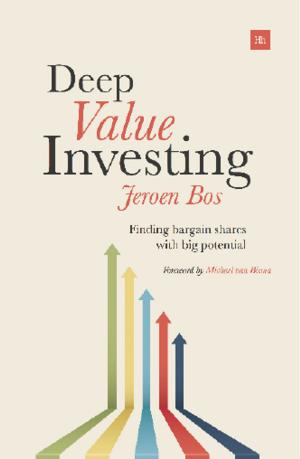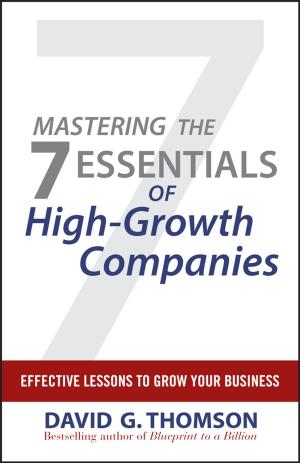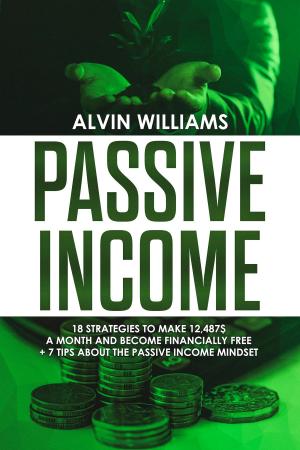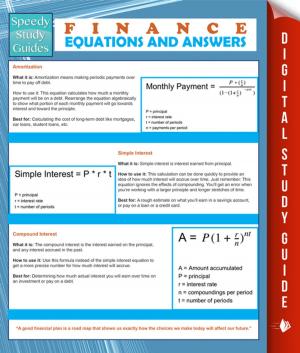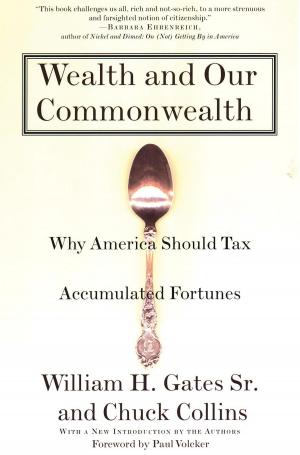Save a Million Dollars and Retire Early
Business & Finance, Personal Finance, Budgeting, Finance & Investing| Author: | Christopher Brathmill | ISBN: | 9788832528398 |
| Publisher: | Christopher Brathmill | Publication: | March 1, 2019 |
| Imprint: | Language: | English |
| Author: | Christopher Brathmill |
| ISBN: | 9788832528398 |
| Publisher: | Christopher Brathmill |
| Publication: | March 1, 2019 |
| Imprint: | |
| Language: | English |
A collection of personal finance lessons to educate, inspire and allow you to achieve financial success
This book – just like your personal finances – is a journey. If you want to take control of your financial life, you need to be inspired. You need the “why”. Why am I going to spend time and energy on this? Why am I going to make temporary sacrifices, work harder and skip buying some of the things I want?
If you can’t answer those questions, don’t buy this book. In fact, don’t buy any personal finance books and don’t even try to improve your finances. It all starts with the why. However, if you have an answer to the why – to retire early, to become financially independent, to help put your kids through school, to save a million dollars – keep reading.
This book will open your eyes to what’s possible and how to make it possible. Through ten concise, easy to understand lessons, you’ll be inspired to achieve and you’ll be given the knowledge (along with some tips and tricks) to make it happen.
Here’s the journey we’ll take…
- How to Save a Million Dollars
- Managing Money
- Getting Out of Debt
- Saving Money
- Retiring Early
- Can You Really Get Rich by Skipping Your Morning Coffee?
- Make Your Future-Self Rich
- Increase Your IRA Returns
- The Zero Interest Mortgage
- College as a Cost/Benefit Investment
Introduction
Many of these lessons are built upon the principle of compounded growth. It’s a principle that is often underestimated and frequently overlooked. A more concrete example of compounded growth is the rule of 72. The rule of 72 basically states that money will double in timeframes of 72 divided by the rate of return. For example, if your rate of return is 8%, your investment will double every 9 years. At 9%, it’s every 8 years and 10% gets you close to every 7 years. This doubling effect is what produces the unexpectedly large future sums that are discussed in some of these lessons.
A quick example will provide appreciation for the strength of doubling. Let’s say, on the first day of the month, you start with a penny. Each day that month, you double the amount from the day before. Day two you have two cents, day three you have four cents. What do you end up with on day 31? Would you trade your monthly salary for that day 31 amount? How about your annual salary? Keep in mind that after a week you’re at 64-cents and after two weeks (almost half way through the month) you’re at about $82. Day 31 is over $10 million. To put that in perspective, starting with a penny and doubling each day for a month results in an amount roughly equal to 200 years of the median US household income.
I heard that story when I was young and I haven’t forgotten it – compounded growth is a fascinating thing. Some of the following lessons are built on the power of compounding and repeatedly doubling your investment. While you won’t likely be able to double your money 31 times, you should be able to double your early investments several times over the course of your career (assuming you start early).
Now, onto the lessons…
A collection of personal finance lessons to educate, inspire and allow you to achieve financial success
This book – just like your personal finances – is a journey. If you want to take control of your financial life, you need to be inspired. You need the “why”. Why am I going to spend time and energy on this? Why am I going to make temporary sacrifices, work harder and skip buying some of the things I want?
If you can’t answer those questions, don’t buy this book. In fact, don’t buy any personal finance books and don’t even try to improve your finances. It all starts with the why. However, if you have an answer to the why – to retire early, to become financially independent, to help put your kids through school, to save a million dollars – keep reading.
This book will open your eyes to what’s possible and how to make it possible. Through ten concise, easy to understand lessons, you’ll be inspired to achieve and you’ll be given the knowledge (along with some tips and tricks) to make it happen.
Here’s the journey we’ll take…
- How to Save a Million Dollars
- Managing Money
- Getting Out of Debt
- Saving Money
- Retiring Early
- Can You Really Get Rich by Skipping Your Morning Coffee?
- Make Your Future-Self Rich
- Increase Your IRA Returns
- The Zero Interest Mortgage
- College as a Cost/Benefit Investment
Introduction
Many of these lessons are built upon the principle of compounded growth. It’s a principle that is often underestimated and frequently overlooked. A more concrete example of compounded growth is the rule of 72. The rule of 72 basically states that money will double in timeframes of 72 divided by the rate of return. For example, if your rate of return is 8%, your investment will double every 9 years. At 9%, it’s every 8 years and 10% gets you close to every 7 years. This doubling effect is what produces the unexpectedly large future sums that are discussed in some of these lessons.
A quick example will provide appreciation for the strength of doubling. Let’s say, on the first day of the month, you start with a penny. Each day that month, you double the amount from the day before. Day two you have two cents, day three you have four cents. What do you end up with on day 31? Would you trade your monthly salary for that day 31 amount? How about your annual salary? Keep in mind that after a week you’re at 64-cents and after two weeks (almost half way through the month) you’re at about $82. Day 31 is over $10 million. To put that in perspective, starting with a penny and doubling each day for a month results in an amount roughly equal to 200 years of the median US household income.
I heard that story when I was young and I haven’t forgotten it – compounded growth is a fascinating thing. Some of the following lessons are built on the power of compounding and repeatedly doubling your investment. While you won’t likely be able to double your money 31 times, you should be able to double your early investments several times over the course of your career (assuming you start early).
Now, onto the lessons…


